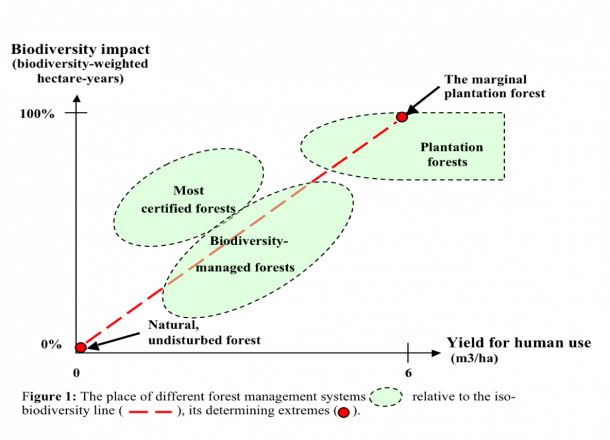Counter-intuitive LCA results
June 27, 2019 by Bo Weidema
Bio-based plastics with larger effect on global warming than their fossil derived counterparts? Certified forest products that unintendedly are more harmful to biodiversity than the corresponding products from plantation forestry? No environmental effect of demanding recycled paper? All these are examples of LCA results that are not immediately intuitive. Does that mean that they are wrong? Not necessarily.
We are often met by a demand that our results should be immediately understandable and make intuitive sense. And there is no doubt that it is easier to communicate results when they are intuitive. Then they are immediately accepted, although often with a condescending “Ah, that’s typical, science just confirms what we knew already”. But it is when our results are not intuitive, as in the above examples, that there is a chance to learn something new. And this is where real change begins.
Counter-intuitive results are not wrong, they are just harder to communicate. Our common sense – just another word for prejudice – is challenged. Intuition is simply not capable of capturing the results of complex systems – at least not without a deeper explanation. But when that explanation is provided, the counter-intuitive results become intuitively right. Let me demonstrate how that works for the above examples:
Bio-based plastics with larger global warming impact than their fossil derived counterparts? Intuitively, one may think of bio-based plastics as being CO2-neutral due to the uptake of carbon from the air during biomass growth. However, that bio-based plastics have a larger effect on global warming than their fossil derived counterparts moves from being counter-intuitive to be intuitive when we understand that agriculture is not CO2 neutral (due to the need for fuel and fuel-based inputs, such as fertilisers) and even more importantly that up to half of the total greenhouse gas emission from growing biomass can come from the indirect land-use effects (iLUC), see e.g. the data for our life cycle assessments of milk.
Certified forest products that are more harmful to biodiversity than the corresponding products from plantation forestry? Intuitively, we would expect the certification to lead to lower impacts on biodiversity, since that should be one of the main reasons for the certification. And the biodiversity in the specific certified forest may indeed be higher than in non-certified forests. However, that the certification may unintendedly lead to an overall reduction in biodiversity compared to plantation forests moves from being counter-intuitive to be intuitive when we understand that the overall impact on biodiversity needs to be measured per unit of wood produced. Plantation forests have a high impact on biodiversity per area, but a low area per cubic metre of wood. This means that more area can be left untouched, with no biodiversity impact. If you have a lower output per area than plantation forests, you will need more area to produce the same – and thus impact the biodiversity on a larger area. The challenge is then to have a biodiversity impact that is so low per area that it also becomes lower per cubic metre of wood. This is what we call “biodiversity-managed forests”. However, in practice, it is very difficult to have low impact on biodiversity when you harvest even rather small amounts the wood that would otherwise be “food” for a large share of this biodiversity (“deadwood”). Therefore, most certified forests have higher biodiversity impacts per unit of produced wood than a plantation forest, i.e. they lie above the iso-biodiversity line in the figure below, taken from our criteria for good biodiversity indicators for forest management.

No environmental effect of demanding recycled paper? When we know that the production of recycled paper has lower impacts than virgin paper, we intuitively think that it must be beneficial for the environment to buy recycled paper. And companies that use recycled paper want to be credited for this and brag about it on their product labels. However, that there is in practice no beneficial effect moves from being counter-intuitive to be intuitive when we understand that the amount of recycled paper is not driven by demand but by supply. The market for recycled paper is constrained by the availability of waste paper. So, an increase in recycling can only come about by throwing more paper in the recycling bins, not by demanding more recycled paper. This is so for all materials where there is a well-functioning collection system. For other materials, such as plastics, there may still be situations where the market is driven by demand. And the market situation can change over time, which has caused a lot of confusion about how to apportion the burdens and credits for recycling as described in one of our previous blog-posts.